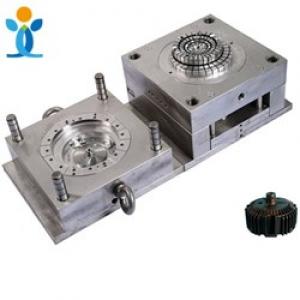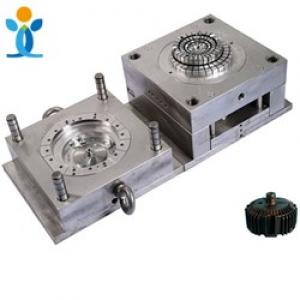which point we need to pay attention to heat resistant ABS injectjion
which point we need to pay attention to heat resistant ABS injectjion
Reducing the internal stress is the key to the injection molding of heat-resistant ABS. In this paper, the author shared the processing points of heat-resistant ABS resin from five aspects: mold design, material drying, molding temperature, packing pressure and time, mold temperature.
The heat resistance of ordinary ABS is not good enough. Now, a series of heat-resistant ABS resins have been developed by adding heat-resistant agents such as α - methylstyrene copolymer and N-phenylmaleimide copolymer. The heat deformation temperature (HDT) is 90-120 ℃.Because the molecular structure of heat-resistant ABS contains highly rigid benzene ring and N-phenyl group, the heat resistance is improved, and the steric hindrance effect of molecular chain is also increased, so that the relaxation speed of molecular chain is reduced, and the products are easy to have large internal stress, resulting in stress cracking, stress whitening, product brittleness and other defects. Therefore, reducing the internal stress of the products is the key to the injection molding of heat-resistant ABS.
Product mold design
The wall thickness difference of ABS products should be controlled within 25% to prevent local stress concentration caused by excessive wall thickness difference. In order to prevent the column from fracture, the R angle should be added or the reinforcing rib should be added at the root of the column with weak strength.
In the buckle design, the root of the buckle needs an inverted R angle. The size of the R angle depends on the wall thickness of the product. The ratio of R angle to wall thickness should be above 0.3. With the increase of this ratio, the internal stress gradually decreases, but the surface shrinkage of the product should also be considered. The design of the cooling channel should ensure the uniformity of cooling and avoid the internal stress caused by uneven cooling and different shrinkage.
Material drying
Generally, heat-resistant ABS resin will absorb moisture in the air during storage and transportation, and the water absorption rate varies with the air humidity, generally between 0.2% and 0.4%. Therefore, the material must be fully dried to reduce the moisture content of the material to below 0.05%, preferably below 0.02%. Otherwise, the surface defects such as splash and silver wire may appear. The drying temperature of heat-resistant ABS resin is higher than that of ordinary ABS, usually 80-95 ℃, and the drying time is 3-4 hours.
Molding temperature
Molding temperature is a parameter that should be paid special attention to during the processing of heat-resistant ABS. Its setting is based on ensuring that the heat-resistant ABS is fully plasticized. The temperature range above the middle value of molding temperature recommended by the supplier should be used as far as possible. The increase of molding temperature will significantly reduce the viscosity of heat-resistant ABS, increase the fluidity of resin, and make the flow distance longer, so as to ensure that the material has sufficient filling capacity 。
Holding pressure and time
For heat-resistant ABS, whether the setting of holding pressure and time is reasonable or not directly affects the size of internal stress in the parts. However, the pressure holding force of the product will be reduced as much as possible, and the internal pressure of the product will be reduced.
The holding time is set according to the time when the gate solidifies with cooling, and the screw is pushed forward again and no pressure is applied to the molded product. If the holding time is too long, the material will be filled too much, the molecular gap will be smaller, and the internal stress will be increased; if the holding time is too short, the product will shrink easily and the size will be unstable. The best holding time should be the shortest time when the weight of the product does not change.
Mold temperature
When molding heat-resistant ABS, mold temperature machine is used to control mold temperature. The recommended mold temperature is 60-80 ℃. Higher mold temperature will produce good flow, higher weld line strength and lower product internal stress, but the molding cycle will be appropriately prolonged.
If the mold temperature is lower than the recommended temperature, the internal stress of the product will be too high, the performance of the product will be reduced, and some undesirable phenomena such as brittle crack, screw hole cracking or spray painting cracking may occur.



